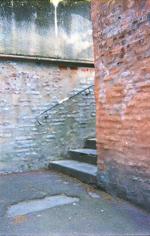|
Beck R J Telephoto Cornex (Model Io) |

Manufactured or assembled in United Kingdom from (Circa) 1905 to (After) 1905.
Index of rarity in France: Rare (among non-specialized garage sales)
Inventory number: 13409
See the complete technical specifications
Chronology of cameras Beck R J
In 1854, two brothers, Richard and Joseph Beck, renamed their London-based optics and microscope company to R & J Beck Ltd after the withdrawal of their third partner, James Smith. The production of cameras began in 1880, and it was in 1892 that the Frena models with their unique system of a notched-edge roll film magazine were introduced.
__________R&J Beck is known for the quality of its cameras and lenses, as well as for its original photographic and technical processes, often ahead of their time... with varying degrees of success.
Their most renowned cameras are the Frena, with their flexible film processes dating back to the 1890s, and later the Zambex, which, unfortunately, did not succeed, perhaps due to their complexity.
Complexity is indeed a defining characteristic of Beck's cameras. The Frena serves as a perfect example for those familiar with the model. However, this complexity allows for efficient, original, and sturdy cameras.
This is also the case with the camera presented here.
The Telephoto Cornex was introduced around 1905. Here, there are no flexible films, but rather classic 3 1/4 x 4 1/4 plates (approximately 8 x 10.5 cm) with a mechanism of dropping plates in the base of the camera. Focus is achieved using a large rotary control located under the camera, which moves the plate holder assembly back and forth.
The focus is precise thanks to the Cornex Index located on the side of the camera. At first glance, there seems to be no significant difference from a classic detective camera. However, by unscrewing the large wheel on the right side and unlocking the two locking bars located at the back of the camera on the left and right, the entire front part can extend, revealing a large bellows. In this position, the camera offers close-up capabilities with a minimum focus distance of 2 feet (approximately 61 cm). An ivory distance scale on the right side of the camera assists with adjustment.
If the bellows extension continues to the maximum, this position can be locked by sliding the two lateral locking bars into the provided notches. From there, one can pull on a rod located on the top of the camera. This rod allows for the sliding of an optical assembly inside the camera, transforming the original lens into a telephoto lens.
In this position, focusing is done using the same control under the camera and the second Cornex Index located further forward. Additionally, a third viewfinder located at the bottom of the front face is only used in telephoto mode.
The front face can be opened to reveal the shutter/lens assembly, which varies depending on the Telephoto model.
The winding is done using a cord on the left side of the camera, and the shutter release is operated by a button on the right side, which applies pressure to the shutter mechanism.
In the Io model, the shutter/lens assembly is the top-of-the-line offering in the catalog. It features a Beck Steinheil Unofocal No. 4 of 6 inches, approximately 150 mm, with an aperture of 4.5, mounted on a Compound shutter with a beautiful aluminum finish. In Telephoto mode, this assembly is equivalent to an 18-inch lens, approximately 450 mm.
I don't believe there is a detective-type camera capable of offering as many possibilities and versatility from other manufacturers in the same period.
The Telephoto Cornex is a truly unique and rare camera worthy of the R&J Beck brand.
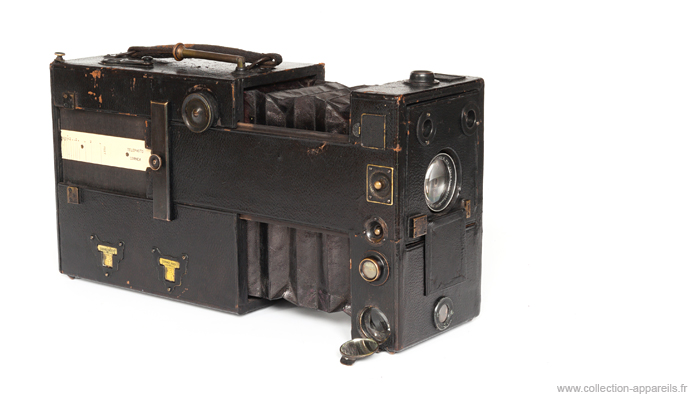

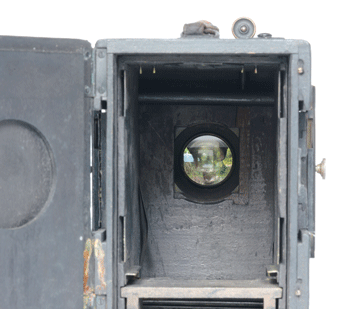
Although it may not be a significant inconvenience for a photographer using a tripod to have to remove their lens, attach the telephoto element to the front of the camera, carefully focus on the ground glass, and then take a telephoto shot, these minor challenges limit this branch of photography to those who don't mind taking a little extra time.
The Telephoto Comex, however, makes telephotography more accessible to less diligent users, in addition to providing a practical instrument for the public. While it possesses all the essential elements of a good detective camera—rigidity, simplicity, etc.—it also serves as a telephoto camera with focusing capabilities, accommodating twelve plates or films. It is complete in every detail and offers the operator all the advantages of a telephoto lens. It features a lens with an equivalent focusing distance of about 18 inches, producing an image approximately three times the linear size of the original. An important point is that it is in no way handicapped by its use as a telephoto camera; it can also function as a quarter-plate format detective camera designed specifically for that purpose.
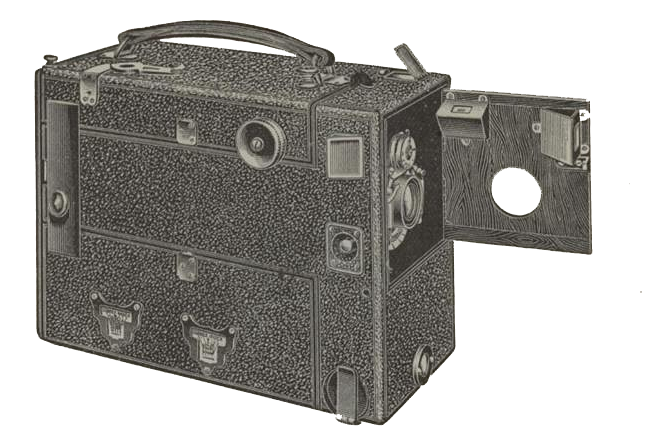
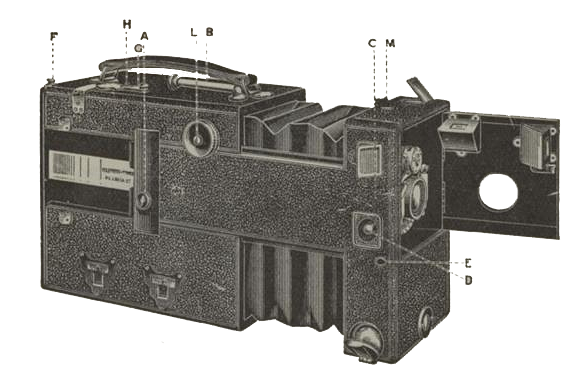
(a) Locking of the front part position
(b) Rod carrying the telephoto lens
(c) Opening of the front part
(d) Shutter release
(e) Hole for pneumatic tube
(f) Latch of the rear door
(g) Plate change
(h) Counter
(i) Locking of the front part in intermediate position
The Telephoto Cornex is a hybrid of a typical detective camera with the usual characteristics and a view camera since the front part is attached to a longitudinal slide, and a bellows ensures light-tightness. Inside the rear part, an optical group can be moved to transform the lens into a telephoto lens.
There are several models available, depending on the lens and shutter equipment of the camera.
Interesting links or bibliography :
Add a link or element of bibliography, a picture taken with this camera, a picture of box or an ads about this camera
Your photos taken with the same camera:
Cameras from Ebay France (Beck R J) (Uploaded each 3 hours)







